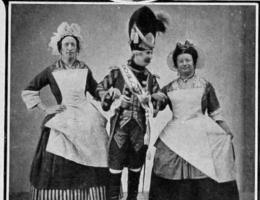Mesdames de la Halle

Opérette bouffe in one act premiered at the Théâtre des Bouffes-Parisiens (Salle Choiseul) on 3 March 1858.
Although previously Offenbach had been forced to make do with writing works for just three then four characters, Mesdames de la Halle gave him his first opportunity to compose an ambitious work with chorus. The scale of this work paved the way for Orphée aux Enfers, completed several months later. The operetta depicts the colourful world of the commercial centre of Paris, which inspired writers, playwrights, painters and composers – from Les Cris de Paris to La Fille de Madame Angot. Although the bustling activity of the market attracted artists, portraying the true nature and typical lifestyle of the marketplace and its characters remained a challenge. Following in the wake of composers who had striven to render what has been called the “style poissard” (the lower-class Billingsgate style) or the “langage des Halles” (market language), Offenbach succeeded in doing justice to his original models by his consummate mastery of humour and the art of pastiche, as well as by the use of frenetic rhythms and continually contrasting modes of expression. The work is based on a series of romantic intrigues. The drum-major Raflafla wishes to marry one of the “dames du marché” (market women), either La Madou or Beurrefondu, whose money is a particular draw for him. These women are interested in a kitchen boy called Croûte-au-pot, however, who is in turn in love with Ciboulette, the pretty young fruit seller whom Raflafla also tries to seduce. After many ups and downs described in raucous ensembles and touching arias, Ciboulette’s true identity is revealed. The young woman, who is the daughter of Raflafla and another “dame de la Halle” called Poiretapée, is given permission by her parents to marry her beloved.
Scientific publications
Articles
The voice of commerce
Publication

